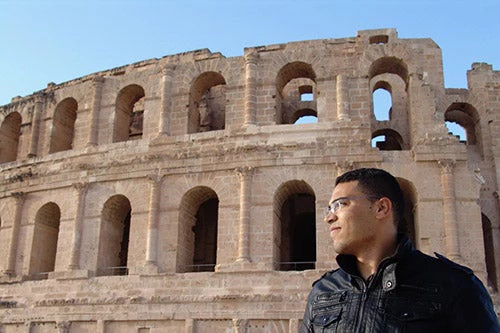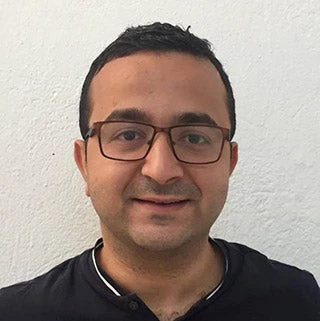For the final blog in the ‘Education in Tunisia’, we hear from a member of Tunisia’s civil society. Ahmed Nagazi from Kairouan offers his perspective on the current shortcomings of the system and his vision for a way forward.
 Education in Tunisia was one of the pillars of post-independence state, with efforts by Habib Bourguiba and successive governments focused on modernizing the system, and ensuring universal access to education by making it free and compulsory. This trend has led to a number of shortcomings and now faces challenges that threaten both its continuity and the gains achieved. These challenges and shortcomings can be captured in four points:
Education in Tunisia was one of the pillars of post-independence state, with efforts by Habib Bourguiba and successive governments focused on modernizing the system, and ensuring universal access to education by making it free and compulsory. This trend has led to a number of shortcomings and now faces challenges that threaten both its continuity and the gains achieved. These challenges and shortcomings can be captured in four points:
The geographical focus of educational institutions in Greater Tunis and the Tunisian coast: The unfair geographical distribution of schools and universities is the largest and most difficult obstacle to modernizing the system and raising the quality of Tunisian education. It is an unequal distribution of resources that impedes the development of other regions and increases the suffering of students by burdening them with additional expenses for travel and accommodation. These extra costs would be unnecessary if the students had found schools and universities in their cities, or at least neighboring cities. In addition, it would allow them to stay in the vicinity of and help develop their hometown, and limit the migration to major cities. For example, the distance between the medical schools of Monastir and Sousse does not exceed 15 km, while the entire central, northwestern and southern regions of Tunisia lack any comparable schools.
Scientific certificates that are not in line with the job market and the post-revolutionary economic and social realities in Tunisia: In light of the huge number of people recruited into the public sector after the revolution, the Tunisian government should gradually reduce its recruitment to ease pressures on the state budget. Thus, many scientific professional specializations oriented towards the private sector, and the trends towards employment in the public sector, are not in line with the current state policy aimed at reviving employment.
Severe shortage of educational resources: The best example would be the school enrolment rates during the current academic year, specifically in the governorate of Kairouan where many educational facilities lack much-needed resources. Frustrated parents took to the streets to protest. On the morning of September 26, 2017, the people of Ouled el Eissawi district blocked the access road to their area. They claimed that their children were deprived of their basic rights to an education. In the same context, Mr. Rafie al-Suhaili, General Secretary of the Association of Basic Education in Buhajla of Kairouan state, said in a statement to the media that the basic education sector in the region is suffering a severe shortage in educational human resources, and that the number of vacancies in the entire country amounted to 5,150 teachers, with the state of Kairouan ranking first in the country in the number of these vacancies with 1,256.
Infrastructure weakness of many educational institutions, especially in rural areas: These institutions in the interior of the country need exceptional support to prepare themselves to receive students because of their fragile infrastructure and lack of maintenance. This is especially evident in the state of health, sports and cultural infrastructure. Many associations, private foundations and even public figures had to pitch in to restore and repair some schools.
These four points capture the current problems facing the Tunisian educational system, which persist despite the efforts of the governments that followed the January 14, 2011 revolution to restore the status and pride of the system.
In our opinion, improving and restoring the system will only be achieved through the establishment of a comprehensive national dialogue, similar to the experience of the National Dialogue (October 5, 2013), which ended the political divisions and crisis that followed the 2014 elections. All stakeholders were included and all the shortcomings and problems were up for debate. This process culminated in a working document and a strategic plan that was binding on all parties to the dialogue. In addition to drawing on this experience, we also need to work to create the partnerships that will be the foundation for attracting the skills and expertise necessary for developing and modernizing the national educational system.
 Education in Tunisia was one of the pillars of post-independence state, with efforts by Habib Bourguiba and successive governments focused on modernizing the system, and ensuring universal access to education by making it free and compulsory. This trend has led to a number of shortcomings and now faces challenges that threaten both its continuity and the gains achieved. These challenges and shortcomings can be captured in four points:
Education in Tunisia was one of the pillars of post-independence state, with efforts by Habib Bourguiba and successive governments focused on modernizing the system, and ensuring universal access to education by making it free and compulsory. This trend has led to a number of shortcomings and now faces challenges that threaten both its continuity and the gains achieved. These challenges and shortcomings can be captured in four points:
The geographical focus of educational institutions in Greater Tunis and the Tunisian coast: The unfair geographical distribution of schools and universities is the largest and most difficult obstacle to modernizing the system and raising the quality of Tunisian education. It is an unequal distribution of resources that impedes the development of other regions and increases the suffering of students by burdening them with additional expenses for travel and accommodation. These extra costs would be unnecessary if the students had found schools and universities in their cities, or at least neighboring cities. In addition, it would allow them to stay in the vicinity of and help develop their hometown, and limit the migration to major cities. For example, the distance between the medical schools of Monastir and Sousse does not exceed 15 km, while the entire central, northwestern and southern regions of Tunisia lack any comparable schools.
Scientific certificates that are not in line with the job market and the post-revolutionary economic and social realities in Tunisia: In light of the huge number of people recruited into the public sector after the revolution, the Tunisian government should gradually reduce its recruitment to ease pressures on the state budget. Thus, many scientific professional specializations oriented towards the private sector, and the trends towards employment in the public sector, are not in line with the current state policy aimed at reviving employment.
Severe shortage of educational resources: The best example would be the school enrolment rates during the current academic year, specifically in the governorate of Kairouan where many educational facilities lack much-needed resources. Frustrated parents took to the streets to protest. On the morning of September 26, 2017, the people of Ouled el Eissawi district blocked the access road to their area. They claimed that their children were deprived of their basic rights to an education. In the same context, Mr. Rafie al-Suhaili, General Secretary of the Association of Basic Education in Buhajla of Kairouan state, said in a statement to the media that the basic education sector in the region is suffering a severe shortage in educational human resources, and that the number of vacancies in the entire country amounted to 5,150 teachers, with the state of Kairouan ranking first in the country in the number of these vacancies with 1,256.
Infrastructure weakness of many educational institutions, especially in rural areas: These institutions in the interior of the country need exceptional support to prepare themselves to receive students because of their fragile infrastructure and lack of maintenance. This is especially evident in the state of health, sports and cultural infrastructure. Many associations, private foundations and even public figures had to pitch in to restore and repair some schools.
These four points capture the current problems facing the Tunisian educational system, which persist despite the efforts of the governments that followed the January 14, 2011 revolution to restore the status and pride of the system.
In our opinion, improving and restoring the system will only be achieved through the establishment of a comprehensive national dialogue, similar to the experience of the National Dialogue (October 5, 2013), which ended the political divisions and crisis that followed the 2014 elections. All stakeholders were included and all the shortcomings and problems were up for debate. This process culminated in a working document and a strategic plan that was binding on all parties to the dialogue. In addition to drawing on this experience, we also need to work to create the partnerships that will be the foundation for attracting the skills and expertise necessary for developing and modernizing the national educational system.


Join the Conversation